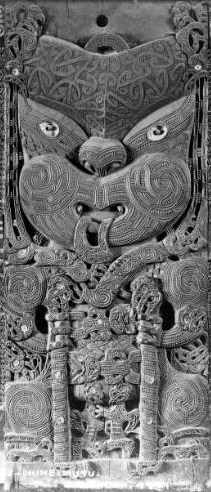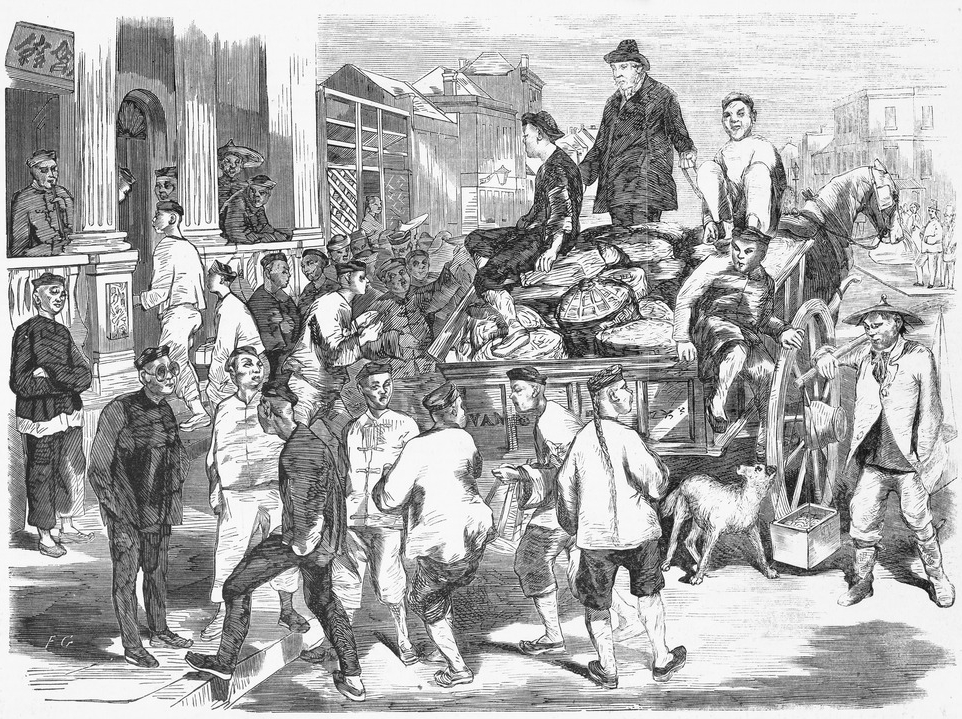|
Pakapoo Ticket
Pakapoo (; sometimes spelt pak-ah-pu or Pák Kòp Piú) is a Chinese lottery game popular in Oceania in the 19th century, including on the Victorian Goldfields. A pakapoo ticket is bought, which contains rows of characters from the ''Thousand Character Classic The ''Thousand Character Classic'' (), also known as the ''Thousand Character Text'', is a Chinese poem that has been used as a primer for teaching Chinese characters to children from the sixth century onward. It contains exactly one thousand c ...'', an ancient poem in which no two words are repeated. The master ticket is kept hidden and is marked by the organiser of the game. The player marks a number of characters on their ticket. The ticket closest to the master ticket wins. A 1921 article in '' The Argus'' in Melbourne, Australia, described the game in detail: In Australian slang, "It looks like a Pakapoo ticket" is a reference to any writing that is messy or scrawled. References Lotteries Culture of New Z ... [...More Info...] [...Related Items...] OR: [Wikipedia] [Google] [Baidu] |
Culture Of China
Chinese culture () is one of the Cradle of civilization#Ancient China, world's earliest cultures, said to originate five thousand years ago. The culture prevails across a large geographical region in East Asia called the Sinosphere as a whole and is extremely diverse, with customs and traditions varying greatly between regions. The terms 'China' and the geographical landmass of 'China' have shifted across the centuries, before the name 'China' became commonplace. Chinese civilization is historically considered a dominant culture of East Asia. Chinese culture exerted profound influence on the philosophy, customs, politics, and traditions of Asia. Chinese characters, Chinese ceramics, ceramics, Chinese architecture, architecture, Chinese music, music, History of Chinese dance, dance, Chinese literature, literature, Chinese martial arts, martial arts, Chinese cuisine, cuisine, Chinese art, arts, Chinese philosophy, philosophy, etiquette, Religion in China, religion, Legalism (Chin ... [...More Info...] [...Related Items...] OR: [Wikipedia] [Google] [Baidu] |
Oceania
Oceania ( , ) is a region, geographical region including Australasia, Melanesia, Micronesia, and Polynesia. Outside of the English-speaking world, Oceania is generally considered a continent, while Mainland Australia is regarded as its continental landmass. Spanning the Eastern Hemisphere, Eastern and Western Hemisphere, Western hemispheres, at the centre of the land and water hemispheres, water hemisphere, Oceania is estimated to have a land area of about and a population of around 46.3 million as of 2024. Oceania is the smallest continent in land area and the list of continents and continental subregions by population, second-least populated after Antarctica. Oceania has a diverse mix of economies from the developed country, highly developed and globally competitive market economy, financial markets of Australia, French Polynesia, Hawaii, New Caledonia, and New Zealand, which rank high in quality of life and Human Development Index, to the much least developed countries ... [...More Info...] [...Related Items...] OR: [Wikipedia] [Google] [Baidu] |
Goldfields Region Of Victoria
The Goldfields region of Victoria is a region commonly used but typically defined in both historical geography and tourism geography (in particular heritage tourism). The region is also known as the Victorian Golden Triangle. Description It takes in a specific area of North Central Victoria, the major cities of Ballarat and Bendigo as well as smaller centres including Daylesford, Castlemaine and Maryborough. It extends as far north as Inglewood and St Arnaud. It encroaches on the Western District near Ararat. Other significant towns include Maldon, Creswick, Clunes, Avoca and Buninyong. Although the region has a strong association with the Victorian gold rush there are, however, significant towns associated with the gold rush and gold mining located outside of this region - notable examples include Warburton, Walhalla, Warrandyte, Chiltern and Beechworth. The goldfields region is more strongly linked to the impact of the Victorian Gold Rush than the ... [...More Info...] [...Related Items...] OR: [Wikipedia] [Google] [Baidu] |
Thousand Character Classic
The ''Thousand Character Classic'' (), also known as the ''Thousand Character Text'', is a Chinese poem that has been used as a primer for teaching Chinese characters to children from the sixth century onward. It contains exactly one thousand characters, each used only once, arranged into 250 lines of four characters apiece and grouped into four line rhyming stanzas to facilitate easy memorization. It is sung, akin to alphabet songs for phonetic writing systems. Along with the '' Three Character Classic'' and the ''Hundred Family Surnames'', it formed the basis of traditional literacy training in the Sinosphere. The first line is ''Tian di xuan huang'' () and the last line, ''Yan zai hu ye'' () explains the use of the grammatical particles , , , and . History There are several stories of the work's origin. One says that Emperor Wu of the Liang dynasty (r. 502–549) commissioned Zhou Xingsi (, 470–521) to compose this poem for his prince to practice calligraphy. Another sa ... [...More Info...] [...Related Items...] OR: [Wikipedia] [Google] [Baidu] |
The Encyclopedia Of New Zealand
''Te Ara: The Encyclopedia of New Zealand'' is an online encyclopedia established in 2001 by the New Zealand Government's Ministry for Culture and Heritage. The web-based content was developed in stages over the next several years; the first sections were published in 2005, and the last in 2014 marking its completion. ''Te Ara'' means "the pathway" in the Māori language, and contains over three million words in articles from over 450 authors. Over 30,000 images and video clips are included from thousands of contributors. History New Zealand's first recognisable encyclopedia was ''The Cyclopedia of New Zealand'', a commercial venture compiled and published between 1897 and 1908 in which businesses or people usually paid to be covered. In 1966 the New Zealand Government published ''An Encyclopaedia of New Zealand'', its first official encyclopedia, in three volumes. Although now superseded by ''Te Ara'', its historical importance led to its inclusion as a separate digital reso ... [...More Info...] [...Related Items...] OR: [Wikipedia] [Google] [Baidu] |
The Argus (Melbourne)
''The Argus'' was an Australian daily morning newspaper in Melbourne from 2 June 1846 to 19 January 1957, and was considered to be the general Australian newspaper of record for this period. Widely known as a conservative newspaper for most of its history, it adopted a left-leaning approach from 1949. ''The Argus''s main competitor was David Syme's more liberal-minded newspaper, ''The Age ''The Age'' is a daily newspaper in Melbourne, Australia, that has been published since 1854. Owned and published by Nine Entertainment, ''The Age'' primarily serves Victoria (Australia), Victoria, but copies also sell in Tasmania, the Austral ...''. History The newspaper was originally owned by William Kerr, who was also Melbourne's town clerk from 1851 to 1856 and had been a journalist at the '' Sydney Gazette'' before moving to Melbourne in 1839 to work on John Fawkner's newspaper, the ''Port Phillip Patriot''. The first edition was published on 2 June 1846. The paper soon became k ... [...More Info...] [...Related Items...] OR: [Wikipedia] [Google] [Baidu] |
Lotteries
A lottery (or lotto) is a form of gambling that involves the drawing of numbers at random for a prize. Some governments outlaw lotteries, while others endorse it to the extent of organizing a national or state lottery. It is common to find some degree of regulation of lottery by governments. The most common regulations are prohibition of sale to minors and licensing of ticket vendors. Although lotteries were common in the United States and some other countries during the 19th century, by the beginning of the 20th century, most forms of gambling, including lotteries and sweepstakes, were illegal in the U.S. and most of Europe as well as many other countries. This remained so until well after World War II. In the 1960s, casinos and lotteries began to re-appear throughout the world as a means for governments to raise revenue without raising taxes. Lotteries come in many formats. For example, the prize can be a fixed amount of cash or goods. In this format, there is risk to the org ... [...More Info...] [...Related Items...] OR: [Wikipedia] [Google] [Baidu] |
Culture Of New Zealand
The culture of New Zealand is a synthesis of Indigenous peoples, indigenous Māori culture, Māori, colonial British culture, British, and other cultural influences. The country's earliest inhabitants brought with them customs and language from Polynesia, and during the centuries of isolation, developed their own Māori and Moriori cultures. History of New Zealand#Colonial period, British colonists in the 19th century brought Western culture and had a dramatic effect on the indigenous inhabitants, spreading Western religious traditions and the English language. Over time, a distinct Pākehā or New Zealand European culture emerged. More recent immigration from the Pacific, East Asia, and South Asia has added to the cultural diversity in New Zealand. The biggest cultural influence in New Zealand remains Western, with a strong focus on democracy and egalitarianism. Māori culture continues to be an essential part of the national identity, with ongoing efforts to recognise and h ... [...More Info...] [...Related Items...] OR: [Wikipedia] [Google] [Baidu] |
Chinese-Australian History
Chinese Australians () are Australians of Chinese origin. Chinese Australians are one of the largest groups within the global Chinese diaspora, and are the largest Asian Australian community. Per capita, Australia has more people of Chinese ancestry than any country outside Asia. As a whole, Australian residents identifying themselves as having Chinese ancestry made up 5.5% of Australia's population at the 2021 census. The very early history of Chinese Australians involved significant immigration from villages of the Pearl River Delta in South China, with most such immigrants speaking dialects within the Yue dialect group. The Gold rushes lured many Chinese to the Australian colonies in the 19th century. As with many overseas Chinese groups the world over, early Chinese immigrants to Australia established several Chinatowns in major cities, such as Sydney (Chinatown, Sydney), Melbourne ( Chinatown, Melbourne), Brisbane ( Chinatown, Brisbane) and Perth ( Chinatown, Perth). ... [...More Info...] [...Related Items...] OR: [Wikipedia] [Google] [Baidu] |





